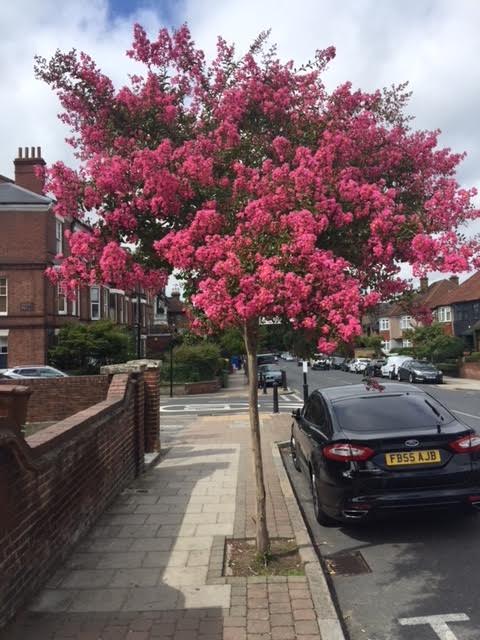Why are we planting trees?
Three years ago we were concerned about the state of our pavements. We decided to look into this concern and determined that most of the damage to our pavements seemed to be due to trees which either were much too big for our pavements or else were the wrong type of tree for a pavement: the vigorous type of cherry that is so plentiful on our estate has very superficial and huge roots that are obviously pushing up the pavements.
The cash strapped Council can do little other than to prune the worst culprits and there is little that the Association can do about that. (Sometimes they remove trees.) The good news is that many of our problem cherry trees are coming to the end of their natural lives, and will eventually die.
What we can do is raise funds for much smaller trees which still have lots of colour and interest throughout the year, but which will not spoil our pavements. Nearby streets in East and West Dulwich manage to do this very well, and at our AGM two years ago we decided to emulate their good practice.
What have we done so far?
Members of the Association have responded enthusiastically to this situation and over two years we have raised the funds for the planting of 26 trees. Some of this has come from external funding which we have been able to raise from the Forest Hill Assembly and the Greater London Authority but most has come from the generous support of our members. Members have also offered to water these trees and the first year’s trees were watered very well throughout an extremely hot summer in which many trees elsewhere in London suffered badly. We have also tried out a variety of small trees in different habitats, such as the windier or the sunnier parts of our Estate.
In all this we are working closely with the voluntary organisation Street Trees for Living which works with the Council to plant street trees. Street Trees for Living has facilitated the planting of 400 trees across the different parts of the Borough of Lewisham over the last two Winters and we have been involved with this wider initiative also.
Can you help us?
We are now asking all of our members to consider supporting the project either by contributing towards the cost of a tree or by offering to water a tree.
Each tree costs £270 which includes the cost of surveying the site, buying the tree, planting the tree and insuring it. £270 is a bargain and one nearby Borough charges £450!
Each tree needs 20 litres of water given all at one go into an irrigation tube each week through the first two growing seasons. This water ensures that the tree’s roots grow deeply and do not come up to the pavement in search of water.
If you are able to help in either of these ways please let your street rep know. You will find their address at the back of your Newsletter and you can return your leaflet to them. Alternatively you can contact Stuart directly using his tree email address which is stuart@streettreesforliving.org

